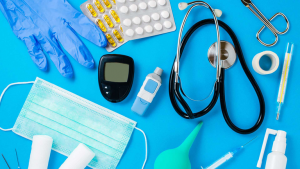While toilet paper and hand sanitizer are largely back on the shelves, behind-the-scenes shortages still plague healthcare facilities across the globe. From testing supplies and equipment, to personal protective equipment (PPE) and ventilator supplies, many shortages in the U.S. have continued to grow rather than resolve.
The COVID-19 pandemic has strained global supply chains and manufacturers to their limits, requiring companies to tap into innovation in order to survive. The Food and Drug Administration (FDA) Center for Diagnostic and Radiological Health (CDRH) has taken novel approaches to address these dire shortages. The CDRH has had to adjust their approach to their emergency use authorization (EUA) process to get some items out on the market in time to save lives.
To put this into perspective, prior to COVID-19, the CDRH issued a total of 56 EUAs for public health emergencies. By July of this year, they issued 156 EUAs for COVID-19 molecular tests and over 200 diagnostic EUAs overall. PPE development and manufacturing were granted 75 EUAs, and ventilators and their accessories were issued 98. This does not include the many EUAs issued for antigen testing, decontamination procedures, and almost two dozen other categories of devices.
Some of the shortages have also been ameliorated by cross-industry manufacturing. Automotive and airline manufacturers have come together to build up the supply of ventilators and PPE. Even 3D printers have been used to create testing swabs and components for ventilators.
A national aluminum shortage has also slowed production for components of important medical supplies. As the U.S. increased its canned soda and alcohol consumption during orders to stay at home, aluminum manufacturing orders that previously took two days to fulfill can now take upwards of five months.
Hospitals are not the only institutions suffering from a lack of supplies. Durable medical equipment required by patients who manage their chronic illnesses at home, and whose illnesses put them at greater risk of contracting the coronavirus, are experiencing months-long delays for essential devices such as oxygen tanks, continuous positive airway pressure and bilevel positive airway pressure machines, and other respiratory devices and their components.
The medical supply chain is far-reaching and complex and health systems and consumers will continue face potential shortages. But as companies continue to pivot their production and focus on innovative approaches to manufacturing and delivering PPE and medical devices, the availability of this crucial equipment should continue to increase.























